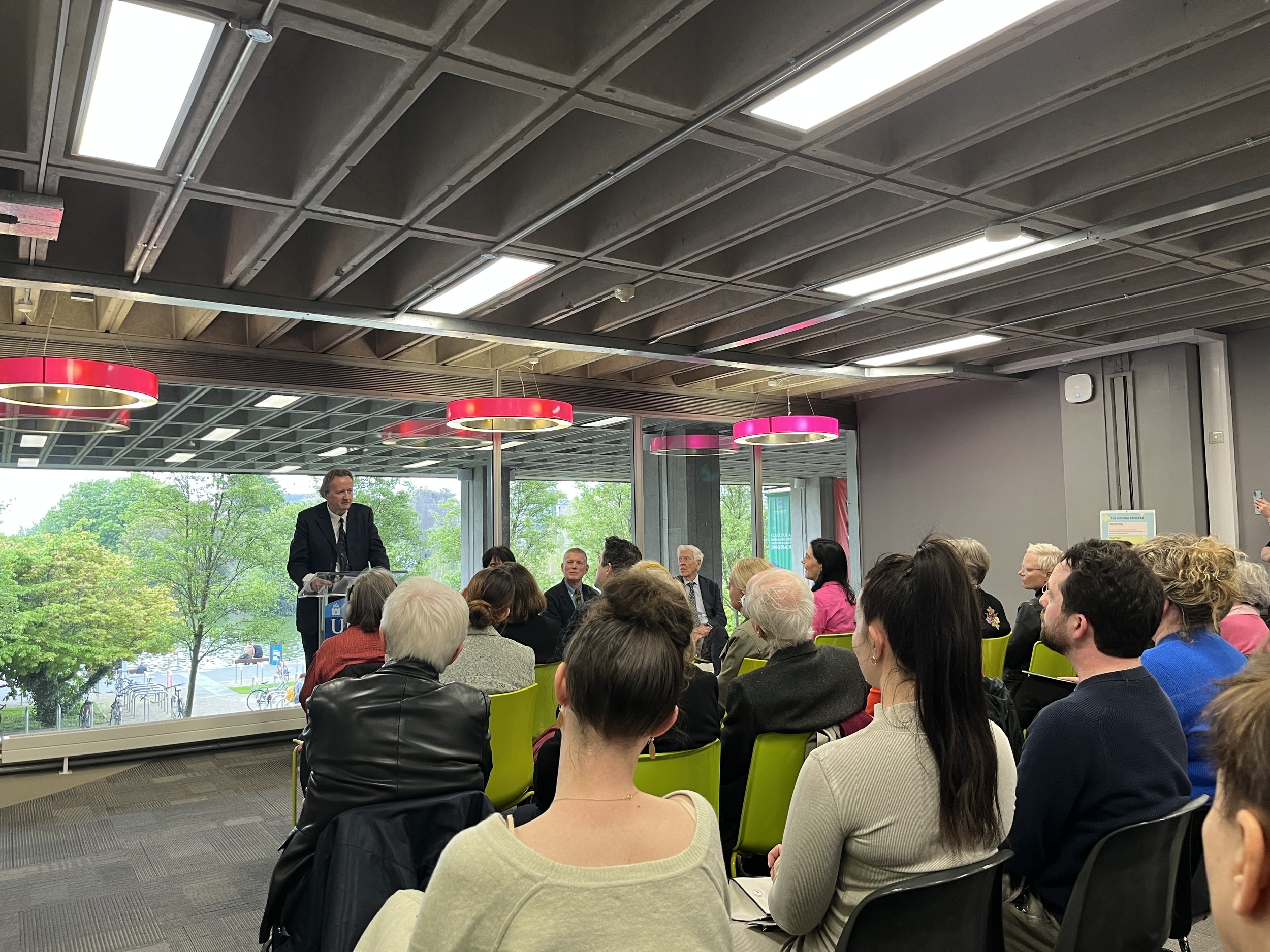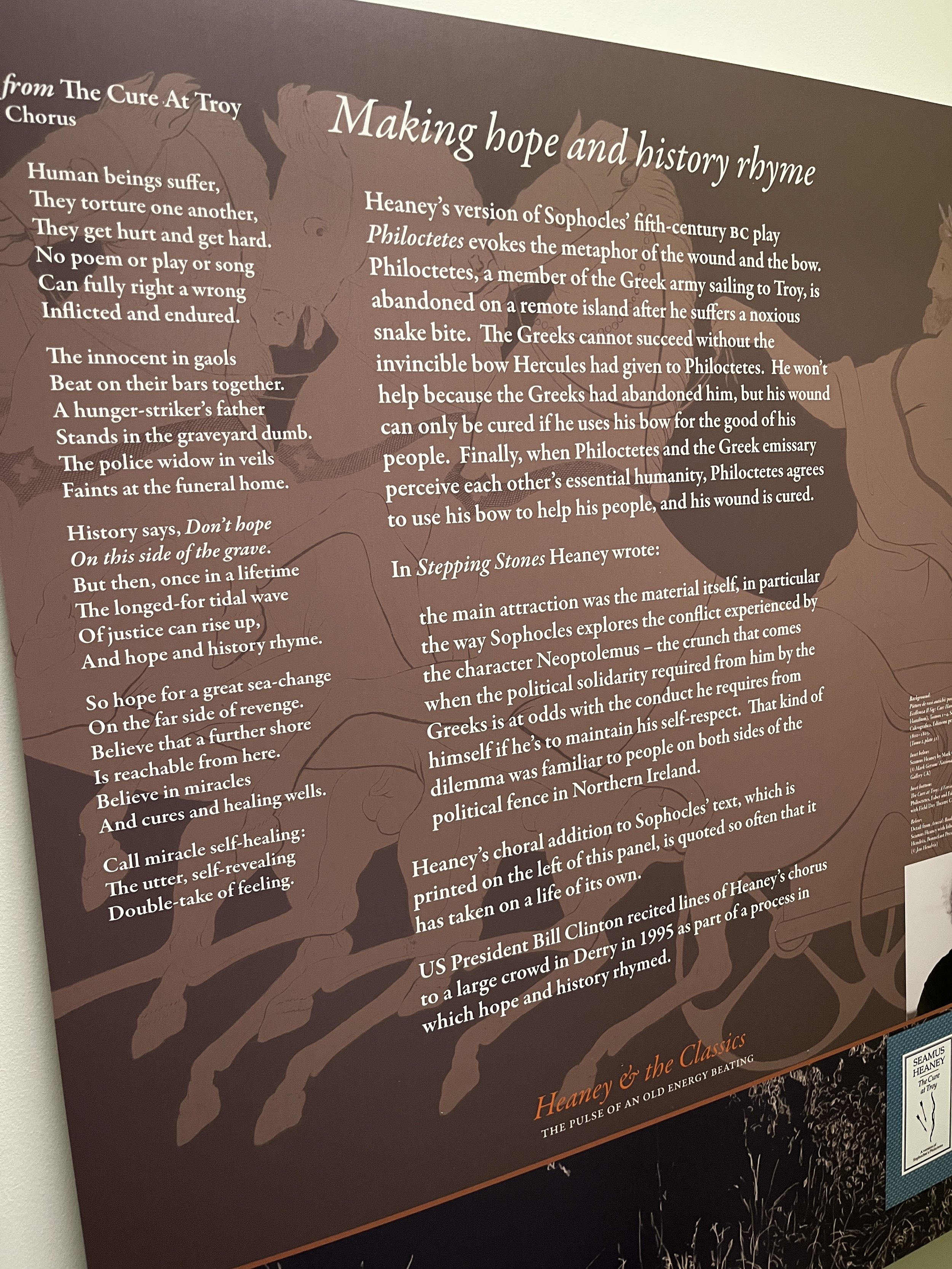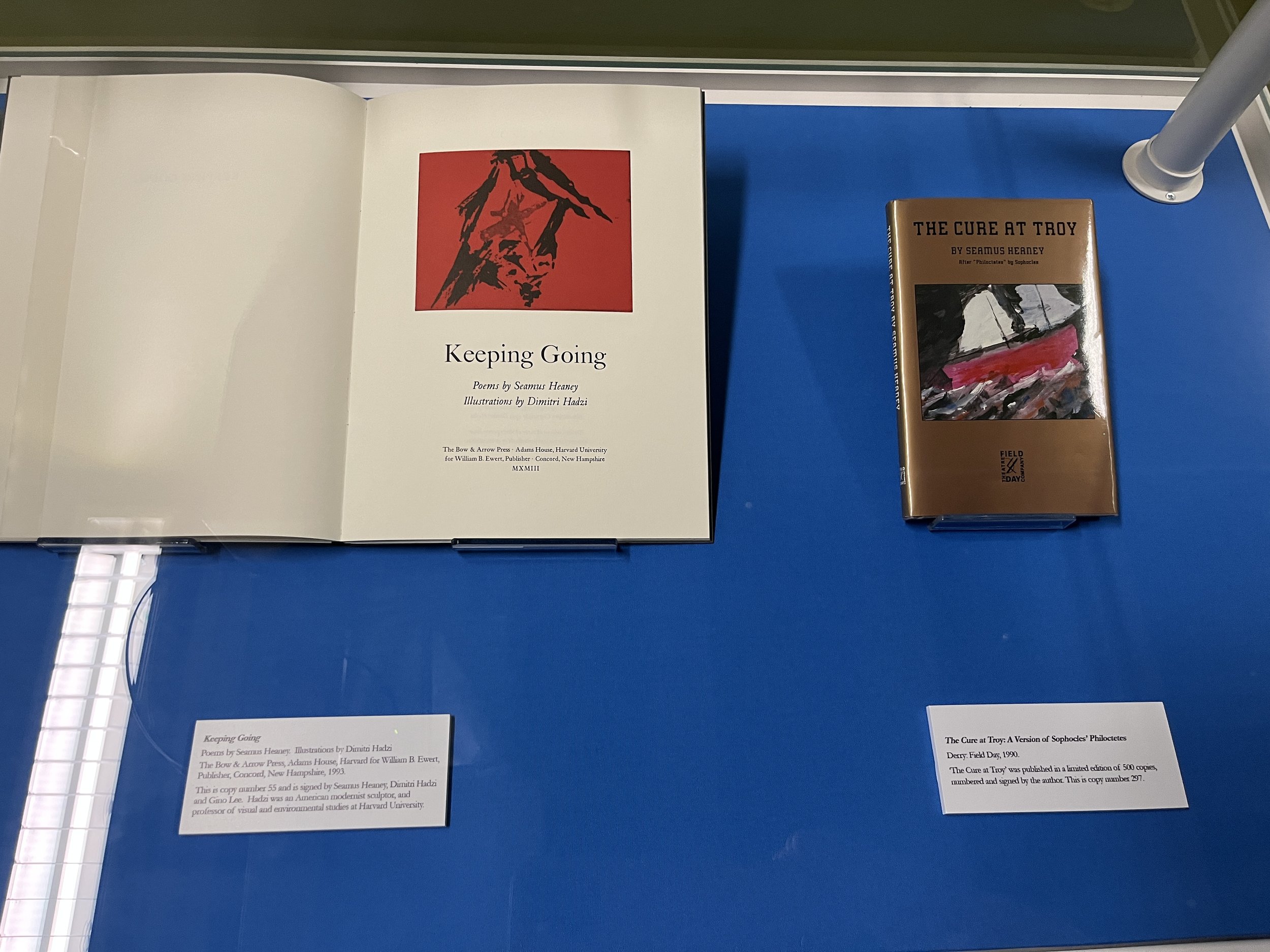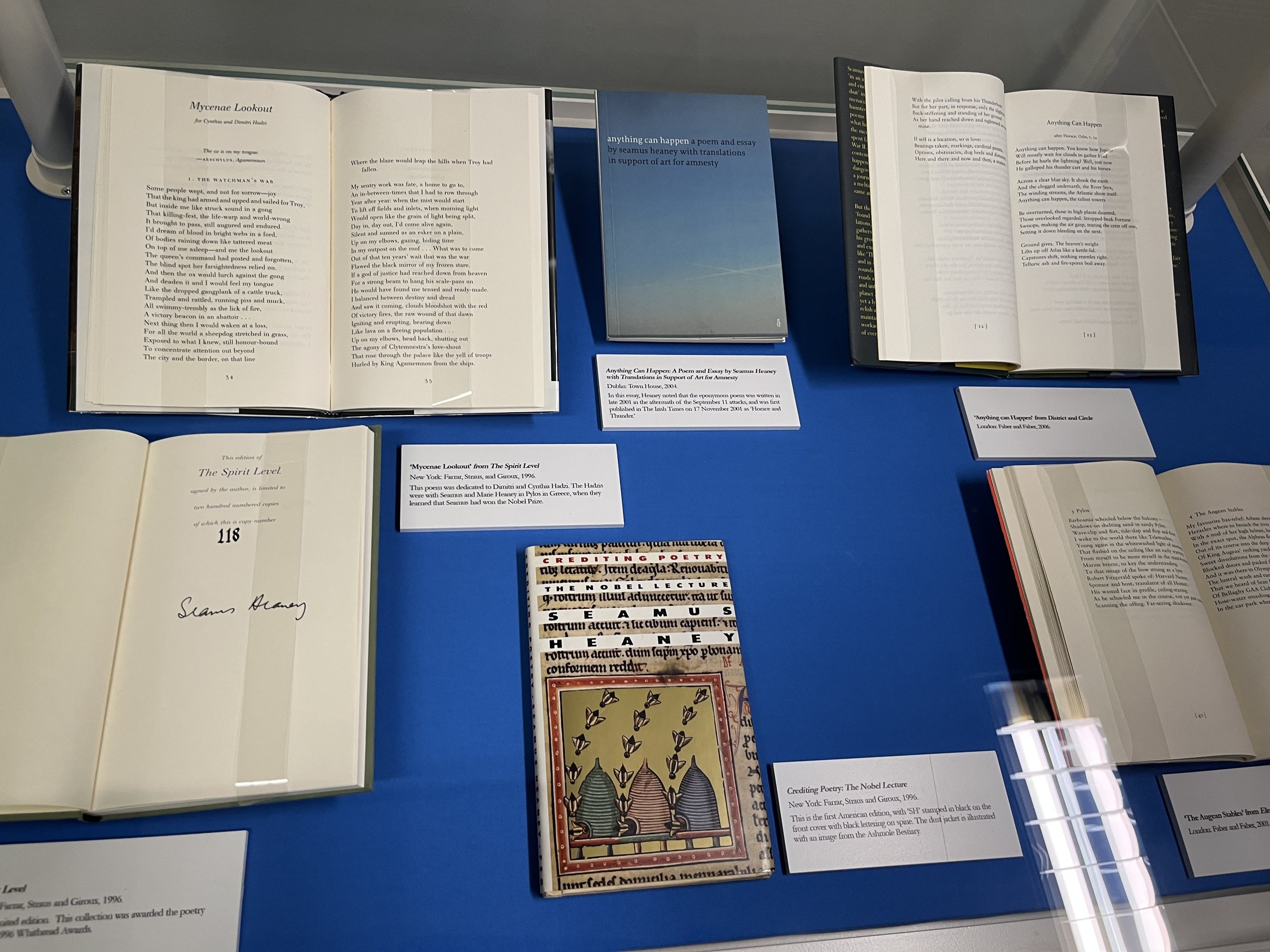Seamus Heaney and the Classics
Yesterday I went to the launch of the UCD Library Special Collections exhibition ‘Heaney and the Classics’, which marks Seamus Heaney’s enduring and many connections with classical literature. Appropriately, it was Poetry Day Ireland. The exhibition has been curated by critic and benefactor Joseph M. Hassett: a small but rich display, it features original editions of relevant books, and display boards.
The main speaker was Professor Roy Foster, whose excellent short book about the poet I wrote about last September. He spoke about the ‘mouthwatering contents’ of the exhibition, and how Heaney had particular care for the appearance and aesthetic design of his books, pamphlets and broadsheets. Classics were central to his world view from an early age in school, and we are the beneficiaries of the continuities and consolations of Heaney’s achievements.
The catalogue features two valuable essays: by Foster on Heaney’s powerful poem ‘Mycenae Lookout’ from The Spirit Level, and by Bernard O’Donoghue (who once taught me) on Heaney and the Classical World.
In the former, Foster writes that
‘Mycenae Lookout’ gestures towards [] optimism in its last section, but is undercut by the merciless nature of violent reality. Heaney found this as viscerally present in classical literature as in traditions nearer home, as made clear in his lecture accepting the Nobel Prize in 1995.’
and concludes that
‘Mycenae Lookout’ delivers a [] high-voltage jolt, with an impact that gains force on every re-reading.
Bernard O’Donoghue points out that
From the first, Heaney’s mythological reference is often the Classics rather than the Irish myths drawn on by Yeats and the other Celtic revivalists, as is evident from the items in this rich exhibition.
Below, some photographs from the evening.






